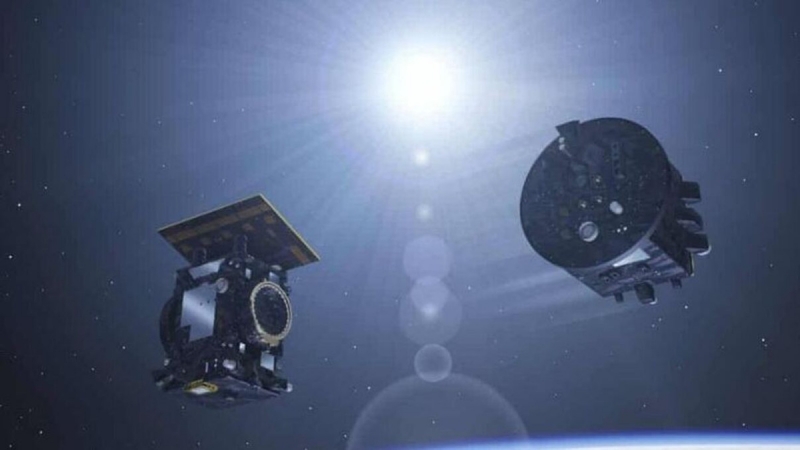>> Creation of artificial solar eclipses/ESA-P. Carril
The European Space Agency (ESA) will launch the Proba-3 spacecraft in a few weeks as part of a mission that will involve flying a pair of satellites in close formation around Earth.
European scientists are preparing to launch a space mission designed to create artificial total solar eclipses. The Guardian writes about it.
Pairs of satellites will be connected by lasers and light sensors. One probe will block the Sun as seen from another spacecraft. This will create the effect of solar eclipses for up to six hours.
Such studies will help study the Sun. Specifically, its impact on power line failures, GPS satellites, and other technologies. The mission will also serve as a benchmark for other space flights that could transform the study of gravitational waves, exoplanets and black holes.
Creating artificial solar eclipses/ESA
This space mission was planned for more than ten years. During this time, a series of sensors were developed that would tightly hold the two satellites. They will be 144 meters apart, to an accuracy of less than a millimeter, when they fly by the Earth at a distance. These two satellites will act, in effect, as a single observatory.
This is an extremely promising technology, said solar energy physicist Francisco Diego of University College London. – It is also very difficult technically. Doing it right will not be easy, but it will be very useful.
Note that in nature, total solar eclipses occur approximately every 2 years and do not last long enough for scientists to fully study them. During several hours of artificially created eclipses, scientists will be able to study the inner corona of the Sun. It is of interest to researchers due to the fact that its temperature is many times higher than on the surface of the sun. Having explained this phenomenon, scientists want to understand how the Sun affects space weather.

